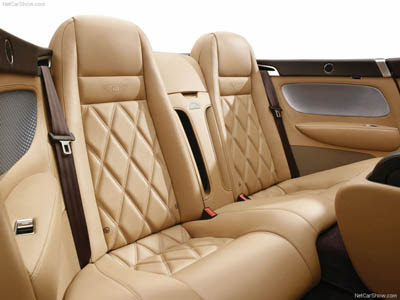




A surf-pattern exterior, a stunning orange dream interior and 0-100 km/h in 5.4 seconds.
The white Volvo C30 has a special surf-pattern design kit and a body kit with redesigned, widened skirts all round.
The front features integrated spoiler flaps, three larger air ducts, integrated fog and cornering lights, and an integrated sport grille with the Volvo iron mark.
The deeper and wider rear skirt features a quad-pipe exhaust system made of stainless steel.
The bespoke high-quality interior has orange leather with matching orange stitching and Heico Sportiv logos on the sport-contoured front seats. The safety belts and floor-mats are also orange.
The radiant interior also has a sports steering wheel in leather and a leather gear lever with a silver accent. The entrance trim in stainless steel features the Heico Sportiv logo.
Beefed-up T5 powerplant
An upgraded, turbocharged T5 engine powers the C30. Is produces 300 horsepower at 5500 rpm and 420 Nm of torque at 3500 rpm. Acceleration from 0 to100 km/h takes 5.4 seconds.
Top speed is 250 km/h (governed). The car also has a specially developed sport suspension.New shocks and springs lower the chassis by 40 millimetres.
The 4-pot sport brake system has blue callipers featuring the Heico Sportiv logo, sport brake pads and 326x30 mm discs. The 19-inch VOLUTION® V TITAN wheels are shod with 235/35R19 Continental tyres.
The white Volvo C30 has a special surf-pattern design kit and a body kit with redesigned, widened skirts all round.
The front features integrated spoiler flaps, three larger air ducts, integrated fog and cornering lights, and an integrated sport grille with the Volvo iron mark.
The deeper and wider rear skirt features a quad-pipe exhaust system made of stainless steel.
The bespoke high-quality interior has orange leather with matching orange stitching and Heico Sportiv logos on the sport-contoured front seats. The safety belts and floor-mats are also orange.
The radiant interior also has a sports steering wheel in leather and a leather gear lever with a silver accent. The entrance trim in stainless steel features the Heico Sportiv logo.
Beefed-up T5 powerplant
An upgraded, turbocharged T5 engine powers the C30. Is produces 300 horsepower at 5500 rpm and 420 Nm of torque at 3500 rpm. Acceleration from 0 to100 km/h takes 5.4 seconds.
Top speed is 250 km/h (governed). The car also has a specially developed sport suspension.New shocks and springs lower the chassis by 40 millimetres.
The 4-pot sport brake system has blue callipers featuring the Heico Sportiv logo, sport brake pads and 326x30 mm discs. The 19-inch VOLUTION® V TITAN wheels are shod with 235/35R19 Continental tyres.









































